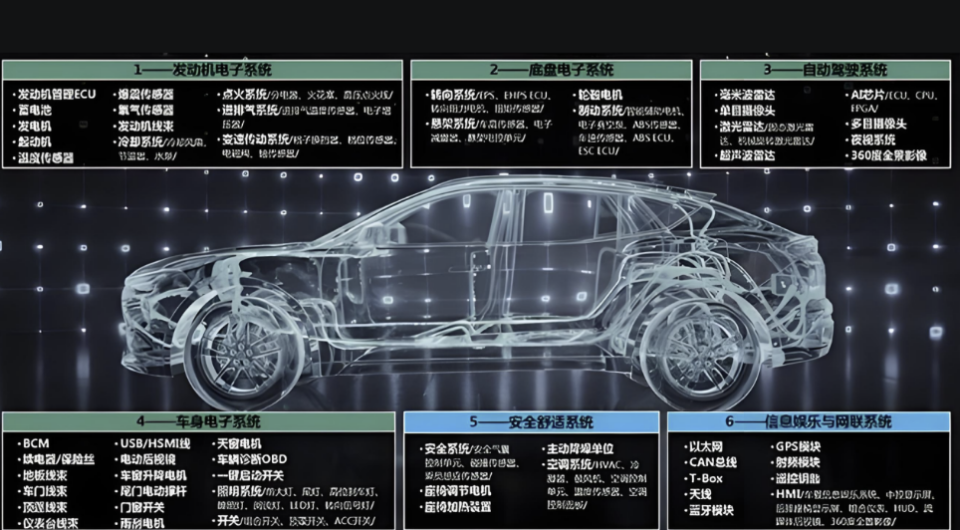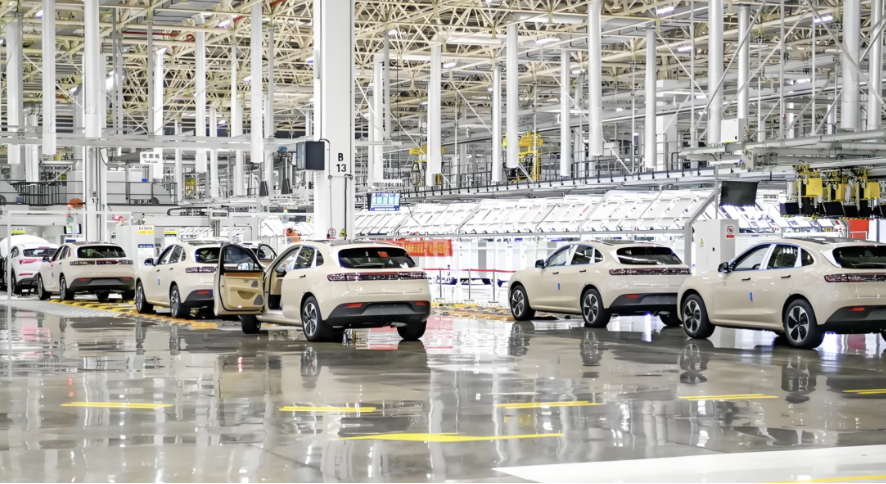A Turning Point: China's Auto Industry Embraces Orderly Competition in the New Energy Era!
![]() 07/25 2025
07/25 2025
![]() 614
614
Recently, the executive meeting of the State Council explicitly proposed to "effectively regulate the competition order in the new energy vehicle industry." This policy directive will profoundly impact China's burgeoning new energy vehicle industry across various dimensions.
Currently, China dominates the global new energy vehicle market. In 2024, China produced and sold 12.888 million and 12.866 million new energy vehicles, respectively, marking year-on-year increases of 34.4% and 35.5%. These figures account for 40.9% of total new car sales in China. Globally, new energy vehicle sales reached 18.236 million units, with China contributing 70.5%—an increase from 64.8% in 2023. China's contribution to global new energy vehicle sales growth was 93%, far surpassing other countries like the United States and Germany. In comparison, Europe and the United States sold 2.89 million and 1.57 million new energy vehicles, respectively, accounting for approximately 24.5% of global sales.
China's leadership in the new energy market is undeniable. However, irrational competition within the industry has become increasingly prominent. For instance, the price war is intensifying, with some enterprises selling products below cost to secure market share, resulting in a steady decline in industry-wide profit margins. Additionally, supply chain pressures have escalated.
From a global perspective, China's auto market is transitioning from "high growth" to "high-quality development." This policy adjustment by the State Council aims not only to rectify domestic industrial chaos but also to establish a sustainable competition order, enhance the quality and added value of industrial development, and effectively respond to the new international competition landscape.
Rectification Efforts by Multiple Departments
Prior to this executive meeting, the Ministry of Industry and Information Technology, the Ministry of Commerce, the National Development and Reform Commission, and other relevant departments had already initiated rectification measures to address the chaos in China's new energy vehicle market. The Ministry of Industry and Information Technology stated its commitment to cooperating with relevant departments to enforce anti-unfair competition laws, focusing on investigating and addressing issues such as dumping below cost price and false advertising. Additionally, it will strengthen spot checks on product consistency to ensure compliance. The National Development and Reform Commission criticized "convoluted competition" that breaches market bottom lines, emphasizing the need to rectify low-price dumping, counterfeiting, and selling fake products. It will also focus on verifying automakers' delayed payments to suppliers, with some payment periods reaching up to 200 days. The Ministry of Commerce, addressing the issue of "zero-kilometer used cars," required automakers to standardize sales behavior and prohibit evading price supervision through deceptive means.

The automotive industry boasts a lengthy upstream and downstream industrial chain, is technology-intensive, and requires significant fixed investments. The prolonged existence of disorderly price wars leads to a decline in the efficiency of upstream and downstream industries, weakens R&D investment capabilities, and triggers hidden quality issues in products. Consider this: In the fiscal year 2024 (April 2024 to March 2025), Toyota Motor's net profit was 4.77 trillion yen (approximately RMB 236.4 billion), while the combined profit of China's top seven automakers (BYD, SAIC, GAC, Geely, Great Wall, BAIC, and Changan) was only RMB 80.3 billion, accounting for 34% of Toyota's profit. Toyota's profit per vehicle was RMB 130,000, while the profit per vehicle for Chinese brands was only RMB 8,000.
Furthermore, China's auto industry's profit margin in 2024 was 4.3%, already lower than the average level of 6% for downstream industrial enterprises. In the first quarter of 2025, the profit margin further declined to 3.9%, clearly demonstrating that irrational competition poses a serious threat to the industry's sustainable development. From the industrial chain perspective, only a few leading vehicle enterprises are profitable, while most enterprises are trapped in a vicious cycle of increasing volume without corresponding profit growth. From the upstream and downstream perspectives, upstream component profits have been low or even non-existent for a long time, while downstream dealers experience price inversion in 84.4% of cases, with 60.4% of these inversions exceeding 15%. This exacerbates business risks rather than compressing dealers' profit margins.
From a business standpoint, profits are paramount. Even if profits are not immediate, there must be a clear path to profitability. Currently, neither condition seems to be met.
The Highest-Level Directive
The executive meeting of the State Council clearly stated the need to strengthen cost investigations, price monitoring, and supervision of product production consistency. It urged key automakers to fulfill their payment period commitments. Additionally, efforts should be made to improve the long-term mechanism for regulating competition, strengthen industry self-discipline, leverage standards to guide industrial upgrading, and guide enterprises to enhance their competitiveness through technological innovation and quality improvement.
Specifically, urging key automakers to fulfill their payment period commitments directly addresses the issue of increasingly prolonged payment periods in the current industrial chain, which seriously threatens the survival and development of small and medium-sized suppliers. In the past, vehicle enterprises often adopted a squeeze strategy towards suppliers to reduce costs and transfer pressures, leading to strained vehicle-component relations and a fragile trust foundation.
Data shows that previously, some suppliers' payment periods were extended to 120 days or even longer, forcing many small and medium-sized enterprises to maintain operations through high-cost financing. This seriously weakened their R&D investment and capacity-building foundations. The China Iron and Steel Association even explicitly required steel enterprises to adhere to the principle of "three determinations and three no's" (production determined by sales, production determined by efficiency, sales determined by cash on hand), resolutely resisting automakers' payment defaults and calling for the implementation of the "no delivery without payment" policy across the industry.
Under the new policy framework, the industry will be guided to establish long-term and mutually trusting vehicle-component cooperation relationships, fostering a virtuous cycle where the prosperity of larger enterprises benefits smaller ones. Enterprises will shift from disorderly price competition to technological and regulated competition, unleashing their innovative vitality and enhancing their comprehensive competitive strength. For instance, data from the China Association of Automobile Manufacturers shows that the proportion of models equipped with L2+ and above intelligent driving systems will reach 62% in 2025, signifying that intelligentization has evolved from an optional configuration to a core competitiveness.

Currently, positive changes have occurred in China's auto market following relevant departments' actions to rectify the disorderly price war. Data indicates that in June 2025, retail sales of passenger vehicles nationwide reached 2.084 million units, marking a year-on-year increase of 18.1% and setting a new record for June sales. This growth was not driven by a new round of "price wars," indicating that policies are guiding the market back to rationality. Leading new energy brands are now focusing resources on technological value, intelligent experience, and service optimization, while traditional automakers are accelerating their digital and intelligent transformation, emphasizing platform architecture and ecological layout, rather than price reductions.
While the issue of irrational competition has been addressed, the development of some new energy brands is still closely tied to local protectionism. To achieve a unified national approach, it is crucial to combine top-level design with grassroots innovation and coordinate institutional constraints with incentives and guidance. Only in this way can China's new energy vehicles truly gain a significant advantage in global competition.
Common People's Car Reviews
With the State Council's executive meeting setting the tone for "regulating the competition order," China's new energy vehicle industry is poised for a critical transition from scale expansion to quality leap. This transformation is not only essential to address current issues like price wars and prolonged payment periods but also provides industry participants with institutional discourse power in global competition.





